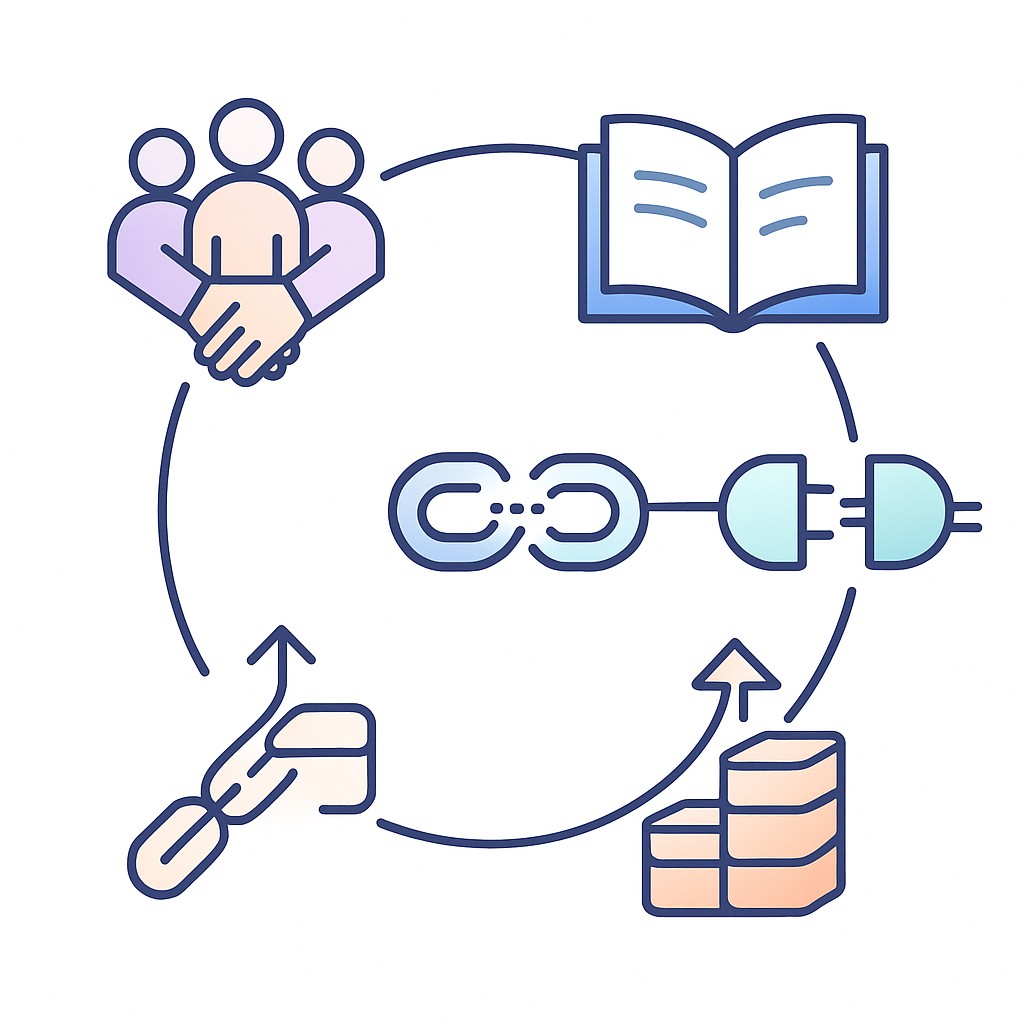Technology Selection Framework for Fit-First Decisions
Technology Selection Framework for Fit-First Decisions

Why the Winning Tech Choice Can Still Sink Your Project
What’s the first thing you examine in a technology selection framework when choosing between two tech options? If you’re like most engineers, you’ve probably started by lining up features and checking the benchmarks. Maybe you threw price into the spreadsheet and circled the box with the fastest, cheapest, coolest solution. I’ve done it—and watched my teams do it, too. We see a system flying on synthetic tests or promising automation out of the box, and vote “yes” before asking the hard questions.
But I’ve been there when Day 1 excitement slipped into weeks of friction. The winner on paper doesn’t always win when it’s time to ship—not because anyone missed a detail, but because we missed the stuff that actually matters after the first demo.
On Day 2, our momentum sputtered out. The tech was new, but our team hadn’t touched it before. Suddenly, what looked elegant began to drag. We hit the skill gap wall—hard and fast.
Then the next problem surfaced. The documentation was pretty thin, mostly a handful of quickstart guides and some scanned PDFs from the vendor. We couldn’t Google our way out of issues, either, since the community was barely there—maybe a handful of forum lurkers and one Stack Overflow answer from 2021. That forced us to lean on vendor support just to get through basic integration, and slowly we built this isolated pocket in our stack, where only a few people could debug or deploy. Operational complexity spiked every time a dependency broke, and what was supposed to save time started costing us, inch by inch.
It’s easy to pick based on what looks best on paper. But great decisions go deeper. It only took a couple rounds of this to see that benchmarks and feature lists can trick you. Fit—defined by clear technology fit criteria across your team’s skills, your roadmap, and your actual constraints—is what gets you to production without backtracking.
So let’s not repeat that cycle. I’m building out a five-factor framework that will help you make fit-first tech choices and document every trade-off, so your next adoption goes smoothly, not sideways.
Hidden Costs: Why “Best on Paper” Often Fails in Production
Benchmarks only tell part of the story. When you’re testing in the lab, everything works on the happy path. Clean data, ideal configs, zero interruptions. But production isn’t the lab. It throws edge cases your way, piles on integration points, and stacks up human factors you can’t simulate. Unless benchmarks reflect your software’s real goals and environment, their performance claims won’t translate to production gains. That alignment is everything. I’ve seen tools rack up fantastic numbers under test conditions, then slow to a crawl once they face messy data, real network hiccups, and team workflows.
Documentation is the hidden lever most people overlook. Good docs can drive a 55% boost in developer productivity—a massive velocity multiplier, not just a nice-to-have. Thin docs, though? They turn what should be a five-minute fix into a two-day deep dive. Believe me, if you’re constantly forced to Slack the vendor support team or squint through half-baked tutorials, small issues will stall you out, and suddenly you’re blocked by things you can’t even Google.
Here’s another trap: talent dynamics. If there’s a shallow hiring pool, every new team member means heavy training and significant ramp-up time. You absorb those training costs up front, and you risk a long-term skills deficit—one that won’t heal on its own, even if the tech is powerful underneath. The smartest engineers don’t just pick the most powerful option. They pick tech their team can actually adopt without slowing the whole ship down. I used to think I could just throw onboarding hours at any gap, but after a couple hiring cycles, it was clear the downtime added up stealthily.
Integration friction is where quick wins become quicksand. Poor SDK coverage, missing observability hooks, weird auth patterns—these quirks can silo your subsystem, which is exactly why a tech stack decision framework guards against creating a little universe inside your stack. Admit it, we’ve all made a choice where integration “looked simple” until it locked us into hour-long debugging sessions just to get basic reporting or alerts working.
And growth doesn’t wait. Once the system starts to scale, all those little decisions start to compound. Swapping out a tool later is expensive, distracting, and risky—especially if you’re mid-hiring or facing a usage spike. The earlier you spot these hidden migration costs, the less likely you’ll be stuck firefighting when you should be shipping features.
Fit-first decisions aren’t about chasing perfect metrics or lowest sticker prices. They’re about maintaining momentum and avoiding those “how did we get stuck here?” meetings. If you want predictable launches and fewer painful resets, it’s worth the upfront effort.
The Practical Fit-First Technology Selection Framework
In a technology selection framework, five practical factors sit at the center: team adoption, ecosystem strength (docs and community), stack integration (and ongoing ops), hidden switching costs, and future scalability. When you get clear on each, complexity falls away. You can actually see what will trip you up before it happens.

Start with team adoption. Ask who’s already comfortable here, who’ll learn fast, and who’s actually responsible when production glitches hit. If your team’s never touched the tool, the supposed advantages evaporate into training delays and second-guessing. A powerful tool that few can wield slows everything down. It’s why experienced engineers pick what fits best—their team, their roadmap, and their constraints. I’ve made the mistake of betting on hope (“they’ll ramp up!”) and lost weeks to confusion when one sharp developer became the bottleneck.
Next: ecosystem, docs, and community. Here, depth beats surface glitz every time. Don’t just skim the README—dig for detailed examples, see how fast issues get answered, and check if the community feels alive. If you can’t find recent discussions or reliable help, you edge closer to vendor dependence, where you’re waiting days for support tickets to clear. I’ve had releases stall not on bugs, but on bad documentation—sometimes you have to admit, if you can’t Google a solution, you’re not moving.
Integration and operations—this is where trouble hides. Pressure-test everything. Is the SDK mature or still beta-flaky? Do APIs break between versions or stay steady? Are observability hooks built in, or will you have to hack around to get basic metrics? Security and compliance: does it click with your org’s model or require rewiring everything? Deployment matters.
A slick tool in dev that melts in prod is just technical debt waiting to happen. How will it fit the way you handle incidents? Can you debug quickly, roll back confidently, monitor changes without guesswork? These questions look boring until you’re woken up by a “can’t see live errors” page at 2 AM. The best fit is nearly invisible—it works with your habits, not against them.
Now for what gets missed: switching costs in tech and scalability. Map out what happens if you ever need to bail—how much migration pain, retraining overhead, weird data egress fees, or locked-in contracts will there be? And when traffic spikes or the roadmap shifts, can you scale without rewriting half the stack? Here’s the unsexy reality: measuring total cost of ownership means accounting for implementation, training, maintenance, monitoring, and future retirement—not just upfront licensing (details here). Beyond licensing, what’s the cost of migration, training, and maintenance? If these numbers are fuzzy, you’re risking more than FOMO—you’re risking a major reset when things should be scaling.
Here’s the takeaway: the frameworks that get you to real progress don’t obsess over the ideal. They ask “does this fit our people, process, and pile of constraints?” Test yours directly, document where friction appears, and loop in whoever will be in the trenches on Day 2. That’s how you ship predictably and sidestep the expensive reversals.
Fit-First in Action: A Workflow You Can Run This Week
Start clear and simple. Before anyone touches code or spins up demos, you need your constraints and success criteria on the table. Write a problem statement everyone trusts—what are we solving, really? Then fill in must-haves, nice-to-haves, and nail down failure modes. Within a technology evaluation framework, agree on a fast timebox and be blunt about who gets final say. The “perfect” choice means nothing if nobody knows what winning even looks like.
Now get your hands dirty. Drop the spreadsheet and run side-by-side drills. Build a thin vertical slice of your candidates—just enough to see core integrations firing and basics working. Mock anything you can: main service calls, data plumbing, alert handoffs. Exercise observability and walk through an incident path, even just once. And here’s the tangent I always fall into: halfway through these tests, your instincts will want to chase “the coolest bug” or “that missing feature.” Pause and check—are you still comparing real fit, or are you getting hypnotized by the bells and whistles? I have to remind myself: focus on the friction, not the flash.
Don’t stop at happy path demos. Give your team a taste of reality. Simulate Day 2 and sketch the exit. Run a quick “brownout” test: break something, follow an on-call runbook, and document an unhappy path fix. Then ask yourself (and your team) the killer question: If you had to switch later, how painful would it be?
Right-size your effort. You’re not building a production monster. Spend hours up front to save weeks chasing fixes later. Then set a cadence to review your decision in real situations—not just at the next retro, but when your stack changes or your team grows. Give yourself permission to course-correct without drama; tech choices aren’t tattoos.
The best workflow isn’t about exhaustive analysis. It’s fit over flash, momentum over theory. Try this in a real sprint, and send me what works (or bombs) for you. We’re still shaping this framework together, and your real-world feedback is gold. If you run into integration friction—like that SDK coverage I warned about earlier—flag it; I haven’t found a foolproof way to predict which teams will breeze through and which will get bogged down.
Use an AI-powered content generator to turn engineering notes, decision records, and demos into clear posts, docs, and updates your team can share quickly.
Fit-First Mandate: Tackling FOMO, Anxieties, and Pushback
If you’re worried fit-first decisions mean trading away performance or flexibility, step back. This framework exists to cut delays, dodge vendor dependence, and slash migration headaches while keeping you fast where it counts. You don’t lose velocity, you just stop leaking it on avoidable mismatches.
Share your actual decision record, don’t let it sit on a manager’s laptop. Walk your team through every trade-off and show the risk matrix, not just the win column. It’s easy to forget, but last time we chased benchmark winners, rollout flatlined on week two. Let’s commit out loud, right now, to choosing fit over flash on the next go.
Here’s the real truth. The options that fit your team ship predictably and avoid expensive reversals—because everyone can own what ships.
So don’t just pick what looks good. Choose the right technology you can live in, and document the why. It’s fit-first or backtracking later.
Enjoyed this post? For more insights on engineering leadership, mindful productivity, and navigating the modern workday, follow me on LinkedIn to stay inspired and join the conversation.
You can also view and comment on the original post here .
